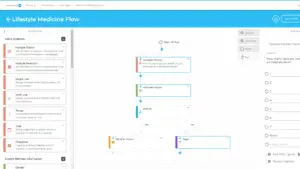
How Engagement Rx expands your lifestyle medicine practice beyond physical boundaries
Engagement Rx® is a powerful technology tool that can help you expand your lifestyle medicine practice beyond physical boundaries. With its advanced features and customizable care paths, Engagement Rx allows healthcare professionals to create personalized wellness programs for patients regardless of their location. In this article, we will discuss how Engagement Rx can help you expand your lifestyle medicine practice beyond physical boundaries. Telemedicine Telemedicine has made medical care available to patients regardless of their location. With Engagement Rx, you can extend your lifestyle medicine services beyond your geographic region. The solution’s tracking features enable you to provide high-quality health services to your patients from anywhere. Customized patient programs Engagement Rx allows you to create customized wellness programs for your patients based on their demographic data, health history, and lifestyle goals. The tool’s advanced features enable you to track and monitor patient progress, provide support and feedback, and adjust the program as necessary. With tailored programs, you can offer personalized care to patients, even those from a different location. Interactive content Engagement Rx features interactive courses, quizzes, and educational resources that engage patients and make it easier for them to understand and implement healthy lifestyle recommendations. The interactive content is accessible online, making it easier for patients to access from wherever they are and regardless of where they are located. Better patient engagement Engagement Rx enhances patient engagement by personalizing approaches to lifestyle medicine. The tool provides a platform for patients to access health content and track their progress, making









